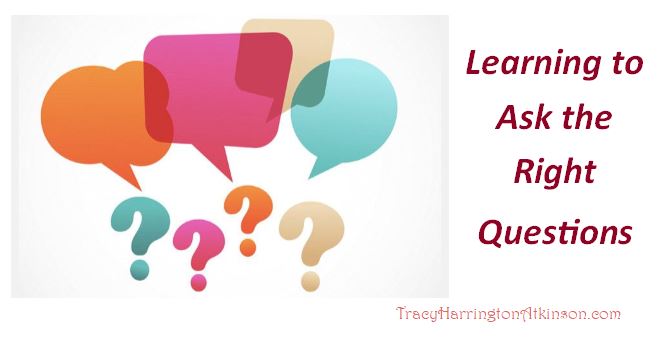 Twenty-first Century Learning is all about learning to ask the right questions. Understanding types of questions leads to asking the right questions. There are six different question types:
Twenty-first Century Learning is all about learning to ask the right questions. Understanding types of questions leads to asking the right questions. There are six different question types:
- Open questions
- Closed questions
- Funnel questions
- Probing questions
- Leading questions
- Rhetorical questions
Open Questions
Open questions allow the responses to have a longer reply, more than a one word responses. Because of this open-ended possibility, more information, critical thinking and creativity are employed in the response.
For example: a closed question is, “Can I go with you?” Generally the answer will be, “yes” or “no.” The open variation of this question is, “Why can’t I come with you?”
Closed Questions
Closed questions encourage a short, generally one word answer. Usually, the answer will be either a right or wrong response. Closed questions tend to be easier to ask and easier to answer due to the limited responses. This type of question is especially valuable to increase participation or used in research situations.
Funneling
Funnelling questions start with a general question, containing a variety of responses and continues until a specific point is reached. It can begin with open-ended questions and then move to more decisive closed-ended questions.
Probing Questions
Probing questions provide more details. The most common probing question tends to rely on asking for an example.
Example: “How did you know the report didn’t get submitted on time?”
Leading Questions
Leading questions are used to guide another person to adopt your way of thinking. This can be especially effective in education in order to students in learning without having to outright state, “That’s wrong.”
Leading questions are accomplished through four means:
- Giving a choice between two options – This is a particularly effective technique when working with children. “Would you like to work on your math first or finish your writing assignment?” It can also be effectively used when scheduling meetings. “Would Tuesday or Wednesday work better for you?”
- Using an appeal – This is used by adding a qualifier at the end of the sentence. “That’s great work, isn’t it?”
- Adding an assumption – Some leading questions can be asked by recognizing an inevitable outcome. “How late do you think she’ll be?”
- Phrasing the question for a yes response – Our natural tendency to prefer to say “yes”. Using this information, phrase leading questions in way to get the desired response. “Tuesday should be best, right?”
Rhetorical Questions
Rhetorical questions are really questions. They are more statements. They don’t require a response. Generally, rhetorical questions are used to engage listeners. “Isn’t the sky really blue today?”
Subscribe to our YouTube Channel by clicking here.
Tracy Atkinson, mother of six, lives in the Midwest with her husband and spirited long-haired miniature dachshunds. She is a teacher, having taught elementary school to higher education, holding degrees in elementary education and a master’s in higher education. Her passion is researching, studying and investigating the attributes related to self-directed learners and learning styles. She has published several titles, including MBTI Learning Styles: A Practical Approach, The Art of Learning Journals, Calais: The Annals of the Hidden, Lemosa: The Annals of the Hidden, Book Two, Rachel’s 8 and Securing Your Tent. She is currently working on a non-fiction text exploring the attributes of self-directed learners: The Five Characteristics of Self-directed Learners. Check out her courses on Udemy.



Comments are closed